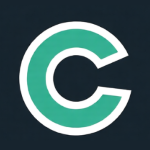
Landing a remote position in today’s competitive job market requires more than just a well-formatted resume—it demands a strategic document that speaks directly to the unique demands of remote work. Hiring managers reviewing applications for remote roles aren’t just looking for qualified candidates; they’re searching for professionals who can thrive independently, communicate effectively across digital channels, and contribute to a distributed team.
Your resume is often your first opportunity to demonstrate these capabilities. Here’s how to craft a resume that not only showcases your qualifications but also positions you as an ideal remote employee.
Understanding What Remote Employers Really Want
Before diving into formatting and content, it’s essential to understand the mindset of remote hiring managers. They face specific challenges that traditional employers don’t encounter: ensuring productivity without physical oversight, maintaining team cohesion across time zones, and identifying candidates who won’t struggle with the isolation or distractions of remote work.
Your resume needs to address these concerns proactively. Every element should work toward demonstrating that you’re not just capable of doing the job, but capable of doing it exceptionally well from a home office, coffee shop, or anywhere else you choose to work.
Crafting a Remote-Focused Professional Summary
Your professional summary sits at the top of your resume for a reason—it’s prime real estate that can immediately capture attention or cause a recruiter to move on. For remote positions, this section needs to work harder than traditional summaries.
Open with a clear statement that includes your target role and emphasizes your remote work capabilities. Instead of generic phrases like “results-driven professional,” try something like: “Self-motivated digital marketing specialist with three years of remote collaboration experience and a proven track record of exceeding KPIs while working across multiple time zones.”
Incorporate specific remote work competencies into this summary. Mention your proficiency with collaboration tools, your experience managing projects independently, or your success in virtual team environments. These details immediately signal to employers that you understand the remote work landscape.
Highlighting Remote-Relevant Skills
Create a dedicated skills section that prominently features both your technical capabilities and remote work proficiencies. This dual approach demonstrates you have the hard skills for the job and the soft skills to execute them remotely.
Technical skills should reflect the actual requirements of the position you’re targeting. If you’re applying for a customer service role, highlight your experience with CRM systems, ticketing platforms, and any relevant software mentioned in the job description.
Equally important are your remote work skills. Include proficiencies with tools like Slack, Zoom, Microsoft Teams, Asana, Trello, or Monday.com. Don’t just list these tools—demonstrate depth by noting specific features you’ve mastered or ways you’ve used them to drive results.
Communication skills deserve special emphasis on a remote resume. Consider phrases like “written communication,” “asynchronous collaboration,” “video conferencing,” or “cross-cultural communication” to show you understand the nuances of remote interaction.
Time management and self-discipline are crucial for remote success. Include skills like “autonomous work,” “deadline management,” “priority setting,” or “results-oriented self-direction” to address the common concern about remote worker productivity.
Reframing Your Experience for Remote Impact
The experience section is where many candidates miss opportunities to stand out for remote roles. Even if your previous positions weren’t remote, you can reframe your accomplishments to highlight remote-relevant capabilities.
Structure each role with the standard format—job title, company name, dates, and location—but add a “(Remote)” designation if applicable. This immediately signals your experience with distributed work.
When describing your responsibilities and achievements, focus on outcomes that matter to remote employers. Instead of “Managed team of five employees,” write “Led distributed team of five across three time zones, implementing daily stand-ups and asynchronous check-ins that improved project delivery by 25%.”
Quantify your achievements wherever possible, but choose metrics that resonate with remote work values. Emphasize improvements in efficiency, communication effectiveness, independent project completion, or successful virtual collaboration.
Use action verbs that convey autonomy and initiative: “spearheaded,” “orchestrated,” “independently managed,” “pioneered,” “coordinated,” or “facilitated.” These words paint a picture of someone who takes ownership and doesn’t need constant supervision.
If you’ve worked in hybrid or office environments, mine those experiences for remote-relevant examples. Did you communicate with vendors via email? Manage projects using digital tools? Collaborate with colleagues in different offices? Troubleshoot technical issues independently? These all demonstrate remote work readiness.
Showcasing Remote Work Achievements
Create a dedicated section for remote work achievements if you have substantial distributed work experience. This could be titled “Remote Work Highlights” or “Distributed Team Accomplishments.”
Include specific examples like:
- “Successfully onboarded and trained new team members entirely through virtual platforms”
- “Maintained 98% customer satisfaction rating while working remotely across six time zones”
- “Implemented new project management system that increased team productivity by 30% in distributed environment”
These concrete examples provide evidence of your remote work capabilities rather than just claiming them.
The Technical Skills Arsenal
Remote work is inherently technology-dependent, so your technical proficiency needs to shine through clearly. Create a comprehensive technology section that goes beyond basic computer literacy.
List your operating system expertise, productivity software proficiency (Google Workspace, Microsoft 365), and any industry-specific applications relevant to your field. Include your comfort level with cloud storage solutions, cybersecurity best practices, and basic troubleshooting abilities.
Don’t forget to mention your home office setup if it’s impressive. A line like “Equipped with dedicated home office, high-speed fiber internet, and professional-grade headset for optimal remote work performance” can differentiate you from candidates who might struggle with connectivity or professionalism.
Education and Certifications That Matter
Your education section should follow traditional formatting, but consider adding any online courses, certifications, or training specifically related to remote work, digital collaboration, or your field.
Certifications in project management (PMP, Agile), digital marketing (Google Analytics, HubSpot), or technical skills (coding bootcamps, software certifications) carry significant weight for remote positions. They demonstrate commitment to self-directed learning—a crucial trait for remote workers.
If you’ve completed courses on platforms like Coursera, LinkedIn Learning, or Udemy that relate to remote work best practices or your target role, include the most relevant ones. This shows initiative and continuous learning.
Formatting for Digital Success
Remote job applications are almost exclusively digital, so your resume formatting must work flawlessly across different platforms and ATS (Applicant Tracking Systems).
Keep your design clean and professional. While creativity is valuable in certain fields, readability trumps elaborate design for most remote positions. Use standard fonts like Arial, Calibri, or Helvetica in 10-12 point size.
Ensure your document is ATS-friendly by avoiding tables, text boxes, headers, footers, and graphics that might confuse parsing software. Use standard section headings that ATS systems recognize: “Work Experience,” “Education,” “Skills.”
Save your resume as a PDF unless the job posting specifically requests another format. PDFs preserve your formatting across different devices and operating systems—crucial when your resume might be viewed on various platforms.
The Contact Information Advantage
Your contact information section might seem straightforward, but it offers subtle opportunities to reinforce your remote work readiness.
Include your email address and phone number, but consider adding your LinkedIn profile URL and, if relevant, a portfolio website or GitHub profile. These digital touchpoints demonstrate your online professional presence.
For location, you can simply list your city and state, or if you’re open to working from anywhere, consider noting “Remote” or “Available for remote work nationwide/globally” to emphasize your flexibility.
Customization Is Non-Negotiable
Perhaps the most critical advice for remote job applications: customize every resume you send. Remote positions often receive hundreds of applications, and generic resumes get filtered out quickly.
Study the job description carefully and mirror its language in your resume. If the posting emphasizes “self-starter,” use that exact phrase in your summary. If they mention specific tools, ensure those appear in your skills section.
Address the company’s apparent pain points with your experience. If they emphasize communication, highlight your communication achievements. If they stress deadline management, showcase examples of meeting tight deadlines independently.
Final Touches That Count
Before submitting your resume, proofread meticulously. Typos and grammatical errors are particularly damaging for remote applications because written communication is your primary tool. Consider using Grammarly or asking a friend to review your document.
Keep your resume to one or two pages maximum. Remote hiring managers are often reviewing applications during their own focused work blocks—respect their time with concise, impactful content.
Finally, ensure your resume tells a cohesive story about why you’re not just a great candidate, but specifically a great remote candidate. Every line should contribute to the narrative that you’ll excel in a distributed work environment.
Moving Forward
Building a standout resume for remote roles requires more than reformatting your existing document. It demands a strategic rethinking of how you present your experience, skills, and achievements through the lens of remote work requirements.
By emphasizing your technological proficiency, communication skills, self-direction, and specific remote work accomplishments, you create a compelling case for why you’re the ideal candidate for distributed work. Combined with customization for each application and attention to digital formatting details, your resume becomes a powerful tool for landing your next remote opportunity.
The remote work landscape continues to expand, bringing both opportunity and competition. A thoughtfully crafted, remote-focused resume gives you the edge needed to move from application to interview—and ultimately, to your ideal remote position.

